Seongsu-dong is an urban regeneration success story. At its core is the red brick architecture that embodies the neighborhood’s heritage, with many of the factories and houses from its heyday as a light industry hub remaining intact. Preserving them has lent a distinctive aesthetic to the landscape.
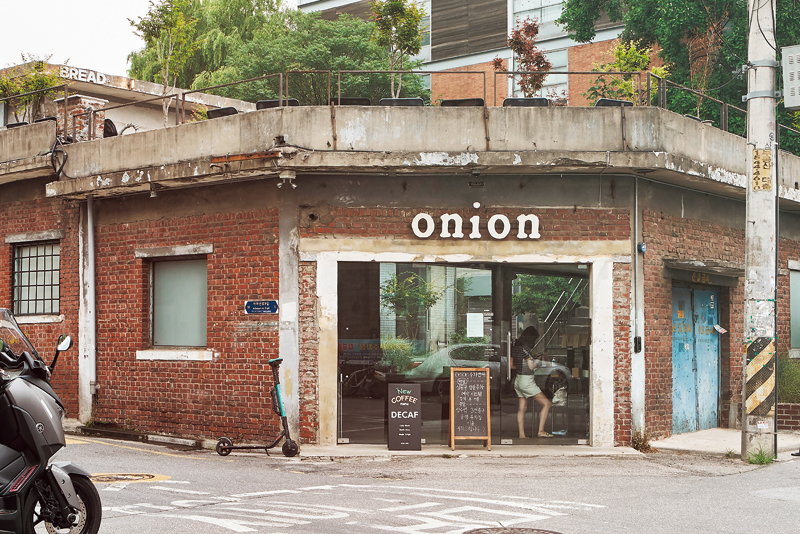
Design craft duo Fabrikr (Kim Dong-gyu and Kim Seong-jo) express context and material properties in their own formative language. For Cafe Onion Seongsu, they seamlessly blended the building with its surroundings by preserving its timeworn appearance.
ⓒ Heo Dong-wuk
Once a beleaguered industrial zone, Seongsu-dong is now one of the most bustling areas in Seoul’s cultural scene. Long queues single out the most popular restaurants and cafés, while global luxury brands and pop-up stores entice throngs of young passersby. An artsy counter-culture vibe is alive and well.
Red brick buildings of yore are a quaint contrast to the ubiquitous steel and glass in other areas. Shoulder-to-shoulder buildings form red walls, giving the neighborhood its distinctive charm.
Around a third of the structures in Seongsu-dong is made of red brick, a much higher percentage than anywhere else in Seoul. This is rooted in the area’s history of having been designated as a semi-industrial zone following the enactment of the Urban Planning Act in 1962.
During the 1970s, when it became a light industry hub, many small businesses moved in and factories and warehouses were built. Over the following decades, red brick architecture became the focal point. The expansion of residential zones during the 1980s and 1990s spurred massive construction of small houses. Once again, red brick was the material of choice due to its resistance to fire and harsh weather, in addition to its simple production, transportation, and construction.
PRESERVING HISTORIC CHARM
The 2000s brought another turning point for Seongsu-dong. When its manufacturing industry fell into decline in the wake of changes in the country’s industrial structure, many factories and warehouses were closed and abandoned. With minimal renovations, these empty spaces were converted into photo studios and designer showrooms, altering the public’s perception of the area. The once dilapidated industrial zone soon turned into a beehive of trendy art and culture.
Renewal of semi-industrial zones typically involves the demolition and replacement of old structures. But obliterating the vestiges of the past easily results in the homogenization of urban landscapes. Seongsu-dong is distinct in that its industrial heritage has been preserved thanks to government-led initiatives that d new value in old buildings.
In 2017, the local district office enacted the Ordinance Governing the Preservation and Support of Red Brick Structures in Seongdong District. The measure represented a different approach to urban regeneration, with architectural design guidelines aimed at celebrating Seongsu-dong’s historic character by preserving the aesthetics and materials of building exteriors.
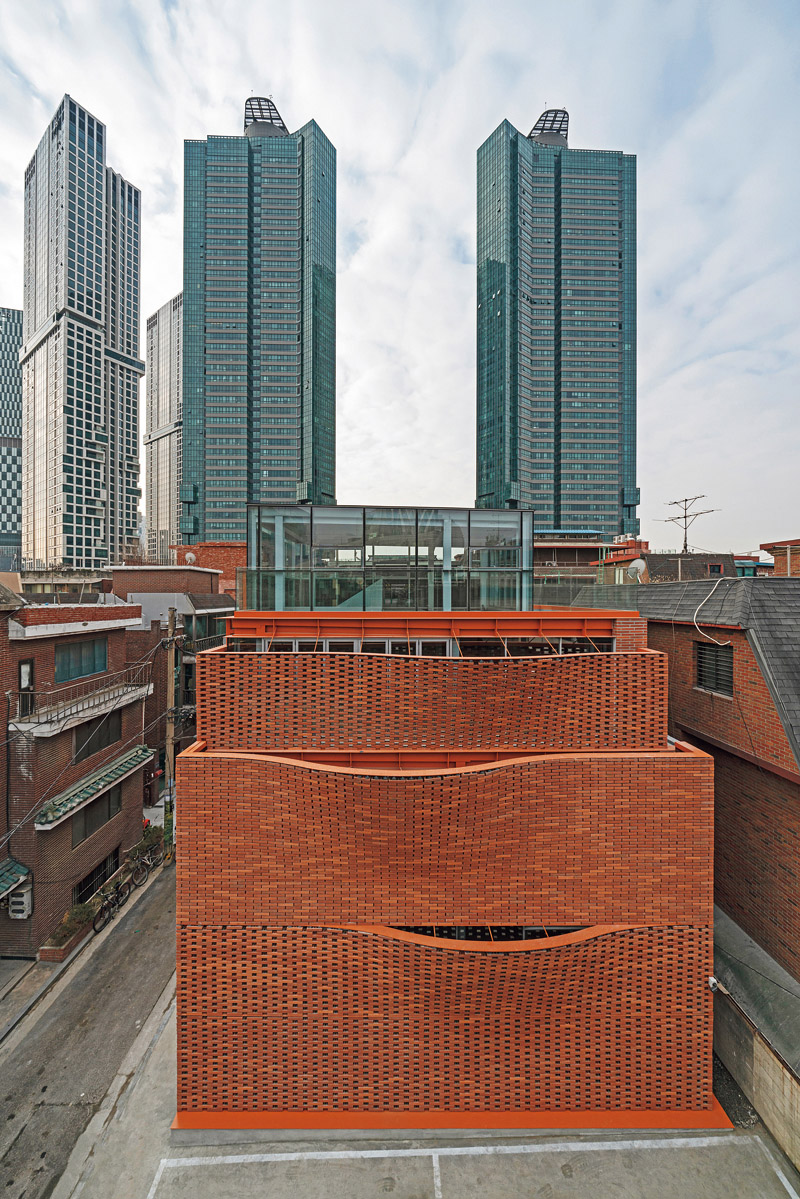
Seongsu WAVE. A multi-unit residence transformed into a commercial building by JYA-RCHITECTS. Curves were incorporated to a wave-like façade, providing a sense of openness while respecting the neighborhood’s identity.
ⓒ Hwang Hyochel
BECOMING A CULTURAL HOTSPOT
Daelim Changgo, a café-cum-gallery on Seongsu-dong Café Street, sparked the transformation of the neighborhood into a cultural hotspot. A rice mill occupied the café’s location during the 1970s, and after its closure, the space was used as a warehouse. In the late 2000s, photographer Hyeong-jun An converted the building into a studio, which soon gained fame through word of mouth. From 2011, it began hosting large-scale fashion shows, rock concerts, and exhibitions, generating even greater buzz.
Walking through Seongsu-dong, one easily discovers other notable examples of rejuvenated structures with rich histories, such as Café Onion Seongsu, which opened in 2016. It occupies a 50-year-old building that previously housed a supermarket, restaurant, private residence, repair shop, and factory.
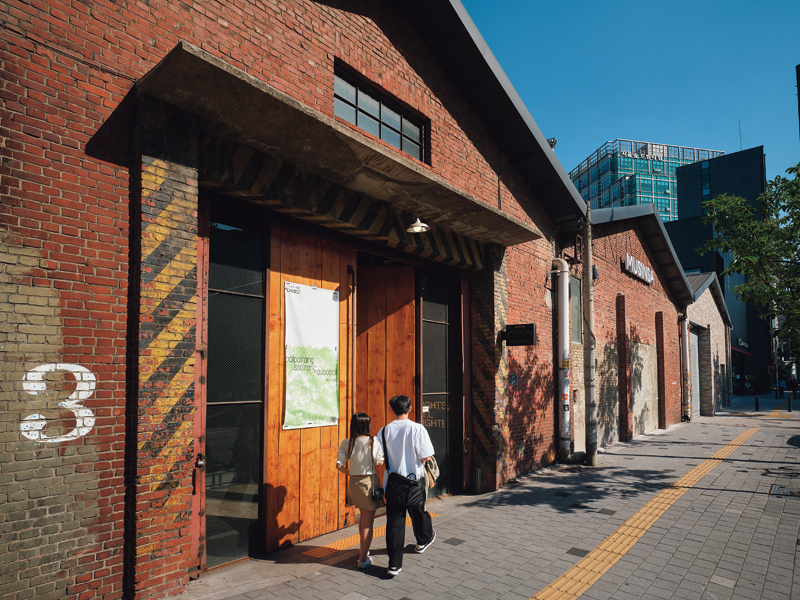
The building now housing Daelim Changgo was once a rice mill and then a warehouse for decades. The old exterior was left intact, and the interior repurposed for a café-cum-gallery. It is a representative example of Seongsu-dong’s urban regeneration and has become one of the neighborhood’s landmark structures.
ⓒ Lee Min-hee
LCDC SEOUL, a multipurpose space for modest to major retail brands, was once home to an auto repair shop and shoe manufacturer. The renovation and extension of the 500-pyeong (1,650-square-meter) building were carried out simultaneously. Asked how the structure’s integrity was retained, architect Suh Seung-mo noted that the old brick exterior was left intact while a new concrete wall was built at an interlocking angle. This created a contrast between the past and present as well as an overlapping effect.
Seongsu Silo, also known as Seoul Urban Manufacturing Hub, is another landmark structure in the area. Construction began when the project won an open architectural design contest in 2018 and was completed five years later. In keeping with the guidelines of the 2017 ordinance, parts of the old factory building, including its red brick façade, were preserved as its structure was extended. In renovating it into a new type of factory, the project’s architect placed individual glass cylinders at the front of the building. Among these, Shoes Silo was designed with a glass front and posterior brick wall, creating an open and independent space. The same brick was also used within and outside the building to maintain continuity.
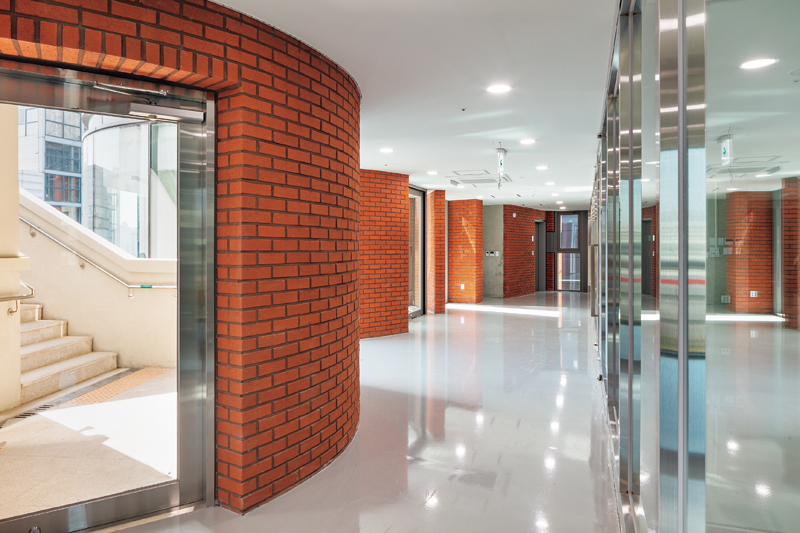
Shoes Silo features a glass front and brick wall, creating an open and independent space. Society of Architecture (SoA) renovated the old factory into a building where production, planning, distribution, marketing, and consumption take place in a single space. Red brick was used for the building as an extension of Seongsu-dong’s signature backdrop.
ⓒ SoA; Photography by Kyungsub Shin
SUSTAINABLE REGENERATION
Red brick continues to be used in many new construction projects in Seongsu-dong. Opened in 2021 with a total floor area of around 20,000 pyeong (over 66,000 square meters), Thought Factory is one of the many knowledge industry centers in the neighborhood. The lower floors of the office section and the entire commercial section are finished with red brick, which connects the two disparate sections. Inside the building is a two-story wall of red and glass bricks that signifies the transition from the old to the new.
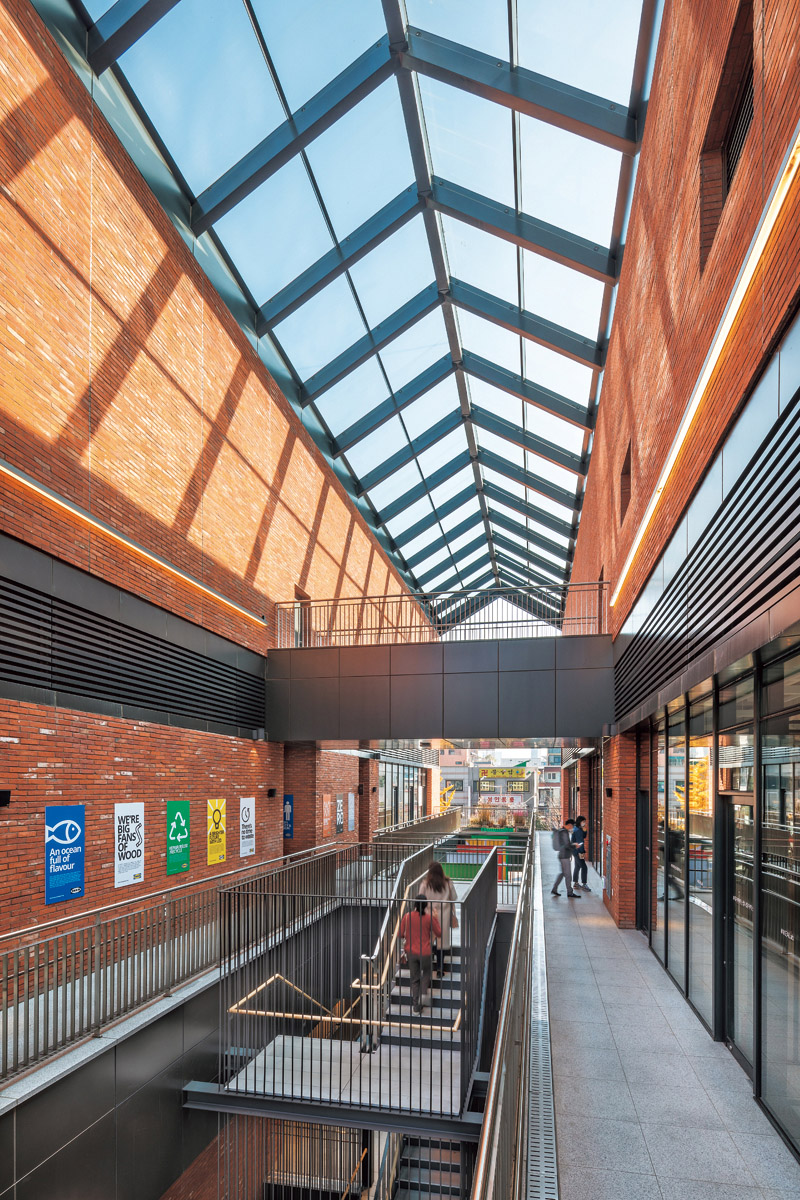
Knowledge industry center Thought Factory combines a commercial with two office buildings. To maintain continuity among the three structures, design and architecture firm dmp opted for red brick to finish the central commercial building and the lower floors of the office buildings. The photograph shows the interior of the commercial building, Seongsu NakNak.
ⓒ Yoon Joon-hwan
Commercial, office, and public spaces constructed in red brick, each with their own design and strategy, have contributed to the successful regeneration of Seongsu-dong by functioning as a physical medium bridging its past and present. They exhibit the architects’ respect for the neighborhood’s historical context and inherit the particular language of the cityscape. However, as David Leatherbarrow and Mohsen Mostafavi point out in their book Surface Architecture, “the picturing of historical profiles in nostalgic recollection ignores the opportunities for new configurations based on the availability of both new and old materials and methods of building construction.” This highlights the need to continue exploring possible construction methods and materials. Only then will the juxtaposition of the past and present in Seongsu-dong go beyond the superficial and lead to a more sustainable example of urban regeneration.